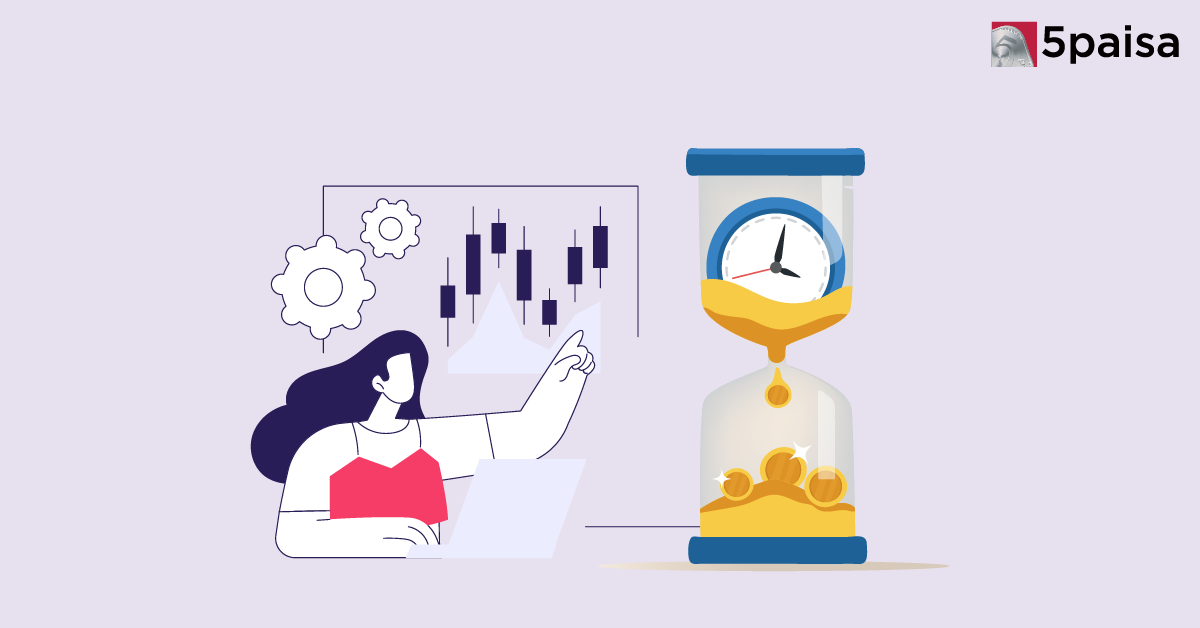Why Time in the Market Beats Timing the Market – Especially During Crises

Last Updated: 15th May 2025 - 01:10 pm
That pit-in-your-stomach feeling when you open your investment account and see a screen splashed in red? Every investor—novice or seasoned—has been there. It’s the kind of moment that tempts you to hit the panic button. Your portfolio’s shrinking, your gains seem like a distant memory, and every financial headline screams doom.
But here’s the truth: market downturns aren’t anomalies—they’re built into the DNA of investing. What separates successful long-term investors from the rest isn’t avoiding losses, it’s knowing how to ride through them.
Red Isn’t Failure—It’s Just Volatility
Before you start questioning your strategy or doubting your decisions, understand this: volatility is normal. It’s not a flaw in the system; it is the system. Financial markets move in cycles, and corrections, crashes, and recoveries are all part of the rhythm.
What really matters is how you react. Do you sell in fear and lock in losses? Or do you stay the course, trust the process, and come out stronger on the other side?
Step One: Diagnose the Drop
- Not every red day is created equal. The first step in navigating a downturn is figuring out why your portfolio is taking a hit.
- Systemic events like inflation spikes, global conflicts, central bank tightening (think RBI rate hikes), or pandemics usually cause broad-based corrections.
- Sectoral shifts—like a tech sell-off or energy price shocks—may hit only certain parts of your portfolio.
- Stock-specific issues—like management failures, frauds, or business model collapses—demand closer scrutiny and quicker action.
In Indian markets, for example, a sudden change in RBI policy or a geopolitical tension in Asia can hit indices across the board. Meanwhile, a SEBI probe into a specific company or promoter-led group could tank individual stocks. Context is king.
Zoom Out: The Power of the Long-Term Lens
When you zoom out from a 5-day or 1-month chart to a 5-year or 10-year horizon, something amazing happens: the red fades. What felt like a disaster in the moment looks like a minor blip in hindsight.
Consider the Nifty 50 during the COVID-19 crash in March 2020—it fell 38% in a matter of weeks. But within a year, it had not only recovered but was making new all-time highs. The investors who stayed invested (or even added during the dip) were handsomely rewarded.
That’s the essence of “time in the market”—it’s not about predicting the perfect entry or exit, it’s about enduring enough cycles to let your investments compound.
Asset Allocation: The Unsung Hero
Your resilience during market chaos depends significantly on how your portfolio is constructed. In India, where retail investors often go heavy on equities (especially small-caps), drawdowns can be sharp.
- Diversification isn’t just about spreading across stocks. It’s:
- Equity (large-cap, mid-cap, small-cap)
- Fixed income (Govt bonds, PPF, debt mutual funds)
- Gold (sovereign gold bonds, ETFs)
- REITs, global funds, or even FDs for stability
This layered approach cushions your portfolio and lets you stay invested even when equities are bleeding.
Emotions: Your Worst Enemy
Behavioral finance has shown that loss aversion is real—we hate losing money more than we enjoy gaining it. That emotional bias causes us to:
- Panic sell when markets drop
- Hoard cash during recovery
- Chase rallies and buy high
The Indian equity boom of 2020–2021 saw a wave of new retail investors. Many got burned when they bought peaks in meme stocks or hype-driven IPOs. The lesson? Discipline > Drama.
When you feel the urge to act during a downturn, pause. Remind yourself: you don’t need to do something. Sometimes, doing nothing is the most strategic move.
Crashes Create Opportunity – But Only for the Prepared
Red days can actually turn green for disciplined investors. If you’re sitting on idle funds and have a long horizon, corrections are a gift.
Strategies like:
- SIP (Systematic Investment Plan): Keep investing monthly regardless of market conditions
- STP (Systematic Transfer Plan): Move funds from liquid/debt into equity in tranches
- Lump sum buys during sharp drops (only if backed by a long-term view)
- These let you accumulate units at lower NAVs, especially in mutual funds. Think of it like buying your favorite stock or fund at a discount.
In India, many long-term wealth creators—like HDFC Bank, Asian Paints, or Titan—looked scary during corrections. But those who bought during the dip made serious wealth over the years.
Know When to Exit – But for the Right Reasons
Holding through volatility doesn’t mean you should hold blindly. Sometimes, a stock or fund loses its fundamental reason to exist in your portfolio.
Ask:
- Has the business model changed?
- Is the management trustworthy?
- Are financials deteriorating year after year?
If yes, cut your losses and redeploy intelligently. Sticking with quality and growth potential is the name of the game.
Use Losses to Save on Taxes (Smartly)
For taxable accounts (mostly HNIs or direct equity holders in India), tax-loss harvesting can be a powerful tool. You can:
- Sell a loss-making asset
- Offset it against your gains
- Reduce your capital gains tax
Just remember SEBI and IT rules: no wash sales within 30 days of re-buying the same security.
Talk to a Professional—It’s Not a Sign of Weakness
If you're overwhelmed, get help. A good SEBI-registered RIA (Registered Investment Adviser) or CFP can:
- Reassess your risk appetite
- Align your goals with your portfolio
- Help you rebalance at the right time
Many investors in India still hesitate to pay for financial advice. But avoiding emotional decisions during a crisis? That can save you lakhs in the long run.
Every Crisis Builds a Smarter Investor
Each downturn is a teacher in disguise. Whether it’s the 2008 GFC, the 2020 pandemic crash, or the Adani Group panic of 2023—those who stayed invested, diversified, and avoided emotional trading have seen the tide turn.
Next time your portfolio’s bleeding, ask:
- What did I learn?
- How will I adjust my strategy?
- Am I really investing based on goals or emotions?
The answer will guide your next move.
Conclusion: The Only Timing That Matters? Staying Invested.
Timing the market might feel like a shortcut to success—but it's usually a trap. Time in the market, especially through the rough patches, is where the real compounding happens.
Don’t let short-term fear rob you of long-term freedom. The red you see today? It's often the
- Flat ₹20 Brokerage
- Next-gen Trading
- Advanced Charting
- Actionable Ideas
Trending on 5paisa
Disclaimer: Investment in securities market are subject to market risks, read all the related documents carefully before investing. For detailed disclaimer please Click here.

 5paisa Capital Ltd
5paisa Capital Ltd
 5paisa Capital Ltd
5paisa Capital Ltd